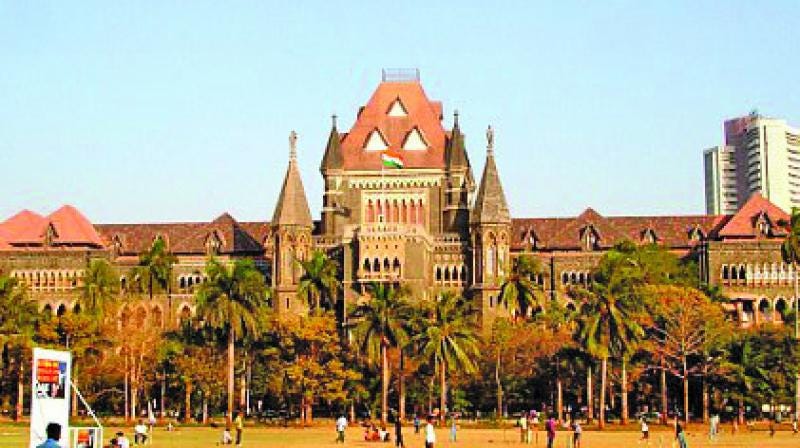Bombay High Court Strikes Down Amendments to Information Technology Rules, 2023
Fact Check Units Unconstitutional: Bombay High Court Strikes Down Amendments to Information Technology Rules, 2023. Major Victory for Freedom of Speech in the Digital Domain.
Bombay High Court Strikes Down Amendments to Information Technology Rules, 2023
In a landmark decision, the Bombay High Court today struck down the amendments to the Information Technology (Intermediary Guidelines and Digital Media Ethics Code) Rules, 2023, specifically Rule 3, which empowered the Central Government to form Fact-Check Units (FCUs) for identifying false or fake news against the government on social media and online platforms. These statutory rules were framed by the Central Government in exercise of its powers under Section 87(2) of the Information Technology Act, 2000.
Constitutional Violations
Justice Atul Chandurkar, the tiebreaker judge, concurred with Justice Gautam Patel's opinion, stating, "I am of the opinion that the amendments are violative of Article 14 and Article 19 of the Constitution of India." This declaration underscores the Bombay High Court's view that the amendments infringed upon fundamental rights guaranteed by the Indian Constitution. Article 14 ensures equality before the law, while Article 19 protects freedom of speech and expression. Justice Chandurkar further asserted that the amendments also violate Article 21, which guarantees the right to life and personal liberty, and do not satisfy the "test of proportionality".
Background of the Case
The case, known as Kunal Kamra v. Union of India & Ors and connected petitions, challenged the IT Amendment Rules, 2023, which modified the Information Technology (Intermediary Guidelines and Digital Media Ethics Code) Rules, 2021. Stand-up comedian Kunal Kamra and other petitioners argued that the amendments were ultra vires Section 79 of the Information Technology Act and violated constitutional rights.
Split Verdict and Tiebreaker
On January 31, Justices GS Patel and Neela Gokhale delivered a split verdict on the matter:
Justice Patel ruled in favor of the petitioners, striking down Rule 3 due to concerns about potential censorship and the shifting of responsibility for content accuracy from creators to intermediaries.
Justice Gokhale upheld the validity of the amended rules, arguing that they target misinformation with malicious intent while protecting freedom of speech.
Following this split decision, High Court Chief Justice DK Upadhyay appointed Justice Chandurkar to provide a tie-breaking opinion.
Arguments Presented
Petitioners' Stance:
FCUs could impose total state censorship on discussions the government wishes to suppress.
Lack of provisions for FCUs to fulfill their stated purpose of keeping citizens informed.
The right to accurate information belongs to citizens, not the State.
Government's Position:
FCUs do not seek to curb criticism or satire but focus solely on government-related content.
The impugned rule applies only to information found in official government files.
Intermediaries would initially evaluate content, with courts serving as ultimate decision-makers.
Overview of the IT (Intermediary Guidelines and Digital Media Ethics Code) Amendment Rules, 2023
The Information Technology (Intermediary Guidelines and Digital Media Ethics Code) Amendment Rules, 2023, were framed under the Information Technology Act, 2000, utilising powers granted under Section 87(2) of the Act. These rules amended the IT Rules of 2021, which had previously replaced the IT Rules of 2011. However, unlike the 2021 amendments, which involved a public consultation process, the 2023 rules were notified directly by the Ministry of Electronics and Information Technology on April 6, 2023, without prior public consultation.
Lack of Public Consultation and Legal Challenges
A key point of contention is that the 2023 amendments were implemented without meaningful consultation with stakeholders such as journalists, press bodies, and civil society organisations. This marked a departure from previous practices where public feedback was sought, particularly for the 2021 amendments. The sudden introduction of the rules triggered legal challenges shortly after their notification, highlighting concerns over the lack of transparency in the process.
Striking Down of Section 66A by Supreme Court:
Earlier, on March 24, 2015, the Supreme Court of India, in the landmark case of Shreya Singhal v. Union of India, had struck down Section 66A of the Information Technology Act, 2000. Section 66A had criminalised the sending of "offensive messages" via communication services, prescribing punishment for messages that were deemed grossly offensive, menacing, or causing annoyance or inconvenience. However, the Court found this provision unconstitutional, ruling that it violated Article 19(1)(a) of the Constitution, which guarantees freedom of speech and expression.
The Court declared that Section 66A was overly vague and broad, allowing for arbitrary interpretation and application. It failed to distinguish between legitimate discussion or advocacy and incitement, risking the criminalisation of protected speech. Furthermore, terms such as "annoying," "inconvenient," and "grossly offensive" were not clearly defined, leaving room for potential misuse. Emphasising the public’s right to know, the judgment was celebrated by free speech advocates and digital rights activists. This decision marked a significant step in protecting online free speech in India and preventing the law's misuse to curb legitimate expression.
Implications for Digital Rights
This ruling is particularly significant in the context of online content regulation and freedom of expression. It is likely to have far-reaching consequences for how online content is regulated in India, potentially providing greater protection for free speech on digital platforms.
Criticism of the Rules and the Role of Fact Check Units
The notification of these rules faced intense criticism from free speech proponents, who saw the so-called Fact Check Units as Orwellian tools designed to stifle free expression and impose censorship through indirect means. These units were perceived as instruments of state control, aimed at regulating online discourse under the guise of fact-checking. The amendments were personally driven by Information Technology Minister Ashwini Vaishnaw, and the Bombay High Court's decision to strike them down represents a significant setback for him and the government's efforts to regulate digital content.
A Legal Victory and Its Implications
As stakeholders in the digital space reconsider their policies, the Central Government may choose to either appeal the court's decision or draft new amendments to address the constitutional issues highlighted by the Bombay High Court. Digital rights advocates view this as a crucial victory in the ongoing battle over internet regulation in India. However, the matter is far from settled, as it is likely to be contested before the Supreme Court. Nevertheless, free speech proponents have legitimate reasons to celebrate this milestone. The verdict reinforces India's standing as a liberal democracy, where constitutional courts play a vital role in defending fundamental rights, particularly those guaranteed under Articles 14, 19, and most notably, Article 21 of the Constitution.






…….it is white truth that no authority/government wants to hear anti voices, even under those being governed under democracy. The persons at the helm of affairs want absolute control and desire to keep freedom of others under their check…….